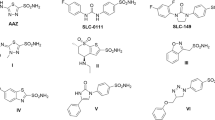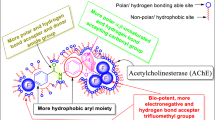Abstract
2-(4-Aminophenyl)benzothiazole (CJM 126) elicits biphasic growth-inhibitory effects against a panel of oestrogen receptor-positive (ER+) and oestrogen receptor-negative (ER-) human mammary carcinoma cell lines in vitro, yielding IC50 values in the nM range. Substitutions adjacent to the amino group in the 2-phenyl ring with a halogen atom or methyl group enhance potency in sensitive breast lines (pM IC50 values). Transient biphasic dose responses were induced but rapidly eradicated after specific drug exposure periods. Two human prostate carcinoma cell lines were refractory to the growth-inhibitory properties of 2-(4-aminophenyl)benzothiazoles; IC50 values > 30 microM were obtained. Potency and selectivity were confirmed when compounds were examined in the National Cancer Institute's Developmental Therapeutics screen; the spectrum of activity included specific ovarian, renal, colon as well as breast carcinoma cell lines. Moreover, comparing 6-day and 48-h incubations, the exposure time-dependent nature of the biphasic response was corroborated. Differential perturbation of cell cycle distribution followed treatment of MCF-7 and MDA 468 cells with substituted 2-(4-aminophenyl)benzothiazoles. In MDA 468 populations only, accumulation of events in G2/M phase was observed. Two MCF-7 cell lines were established with acquired resistance to CJM 126 (IC50 values > 20 microM), which exhibit cross-resistance to substituted benzothiazoles, but equal sensitivity to tamoxifen and doxorubicin. Compared with standard anti-tumour agents evaluated in the National Cancer Institute in vitro cell panel, benzothiazoles revealed unique profiles of growth inhibition, suggesting a mode(s) of action shared with no known clinically active class of chemotherapeutic agents.
This is a preview of subscription content, access via your institution
Access options
Subscribe to this journal
Receive 24 print issues and online access
$259.00 per year
only $10.79 per issue
Buy this article
- Purchase on SpringerLink
- Instant access to full article PDF
Prices may be subject to local taxes which are calculated during checkout
Similar content being viewed by others
Author information
Authors and Affiliations
Rights and permissions
About this article
Cite this article
Bradshaw, T., Wrigley, S., Shi, DF. et al. 2-(4-Aminophenyl)benzothiazoles: novel agents with selective profiles of in vitro anti-tumour activity. Br J Cancer 77, 745–752 (1998). https://doi.org/10.1038/bjc.1998.122
Issue date:
DOI: https://doi.org/10.1038/bjc.1998.122
This article is cited by
-
Synthesis, biological evaluation, and molecular modeling studies of new benzoxazole derivatives as PARP-2 inhibitors targeting breast cancer
Scientific Reports (2022)
-
Synthesis, spectral characterization, antimicrobial, DNA interactions and molecular modeling studies of metal complexes of 1, 3-benzothiazole carbohydrazone
Journal of Chemical Sciences (2018)
-
A new member of tetranuclear dinitrosyl iron complexes (DNICs) with 2-mercaptothiazoline ligand: synthesis, structure and properties
Research on Chemical Intermediates (2014)
-
Chem-bioinformatics and in vitro approaches for candidate optimization: a case study of NSC745689 as a promising antitumor agent
Medicinal Chemistry Research (2013)
-
Nanosized Mn(acac)3 Anchored on Amino Functionalized Silica for the Selective Oxidative Synthesis of 2-arylbenzimidazoles, 2-arylbenzothiazoles and Aerobic Oxidation of Benzoins in Water
Catalysis Letters (2011)



